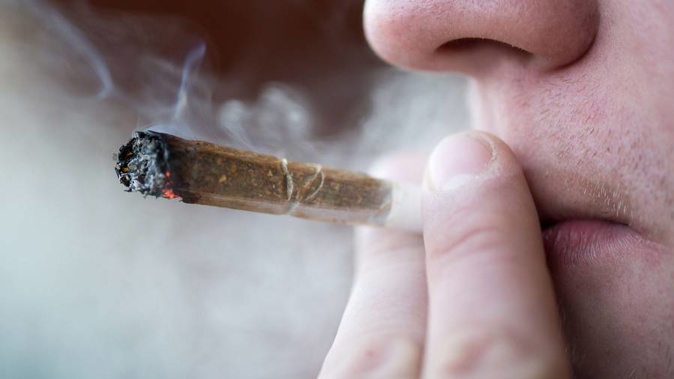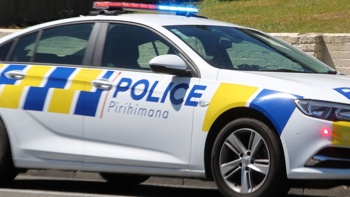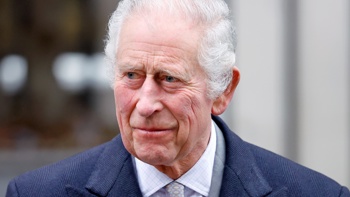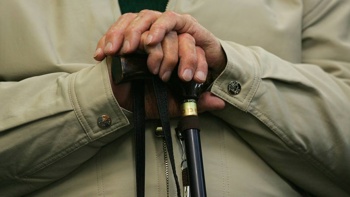
Nicole Charlotte Graham's name is one on a growing list of people who have died after using synthetic drugs.
Her story is like so many - a story of addiction, mental health and a drug so easy to get but so very lethal.
Graham, 30, died at a Lower Hutt house on July 13 last year.
Two days earlier she had been rushed to hospital suffering a seizure as a result of using the toxic substances.
That wasn't enough to stop her smoking the toxic rubbish.
Following an inquest Coroner Chris Devonport ruled that Graham died as "from the effects of synthetic cannabinoid toxicity (5F-ADB) after smoking a synthetic drug at that address on that day".
Coroner Devonport's findings were released to the Herald this week.
In the findings he outlined how Graham had a long battle with drug addiction - using up to four times a week while she was pregnant.
She was rushed to hospital on July 10 after smoking synthetic drugs and suffering a seizure.
However she lied to medical staff saying "she normally had seizures when she was stressed or not sleeping".
"Recent stressors included other family members overstaying their welcome and the fact that her partner was now back in police custody," Coroner Devonport said.
"Ms Graham refused to see a doctor and wanted to leave, saying that she had run out of both quetiapine and olanzapine but declined a prescription offered.
"She claimed that she would get in touch with the Community Mental Health Team the following day, Monday 11 July 2016 but she did not do so."
Psychiatrist Dr John Grigor from Hutt Valley District Health Board's Mental Health Services told the Coroner that Graham was "deemed competent to make a decision, understood the risks and benefits of both staying and leaving, and she left the hospital."
Graham was under a Compulsory Community Treatment Order when she died.
A community treatment order requires a patient to attend and accept specific treatment.
/arc-anglerfish-syd-prod-nzme.s3.amazonaws.com/public/4LZXRHA5YREO3O5LHNGUO7TGSY.jpg)
Synthetic drugs are believed to have killed at least 25 people this year. Photo / File
From gang child to addict
Coroner Devonport outlined the background to Graham's mental health and drug issues in his findings.
He said her father was an ex gang president and Graham "was a gang child".
When she died she was living in a Housing New Zealand property with her partner Michael Robinson
"She had given birth to two children but she was deemed not fit to maintain and care for them and they were placed elsewhere," Coroner Devonport explained.
In March 2015 Capital and Coast District Health Board was informed that Graham had "absconded" from services provided by Taupo Community Mental Health.
Staff there were concerned for her wellbeing and she could not be found.
"For the previous nine years Ms Graham had been frequently in and out of psychiatric services, mainly oscillating between Hamilton and the Henry Bennett Centre, and the Hutt Valley," said Coroner Devonport.
"Despite endeavours from staff over many years, Ms Graham always dropped out of treatment.
Grigor said that Graham was referred by her GP to the Hutt Valley service in late November 2015.
They made "stringent efforts to establish contact" with her but that did not happen until January 2016.
From then until her death Graham was followed up between a crisis service and a community service.
She spent almost six weeks admitted as a patient under a compulsory assessment and treatment order between in April and May 2016.
"Dr Grigor states that the Community Crisis Team and the Community Mental Health Team were both heavily engaged in trying to provide the best possible care for Ms Graham who was really heavily pregnant and refusing, prior to the birth of her son, any antipsychotic medication on the grounds of harm to the child," said Coroner Devonport.
"Ms Graham continued using high doses of both natural drugs and synthetic drugs at least four times a week throughout the pregnancy.
"Dr Grigor states that Ms Graham had a long history of alcohol dependence but from early in the pregnancy had made a decision to try as best she could to refrain from it and generally was successful apart from occasional binge episodes."
Graham gave birth to her son, who the Herald has chosen not to name to protect his privacy, in February 2016.
Child Youth and Family, now the Ministry for Vulnerable Children, determined Graham was not fit to care for her baby and he was permanently placed with whanau.
Graham was granted regular supervised access.
Coroner Devonport heard that the baby was "neurologically damaged" and "already significantly behind in his milestones and would be likely to have challenging special needs".
/arc-anglerfish-syd-prod-nzme.s3.amazonaws.com/public/7U2PETRU7BFETMDSHACTI6GN6I.jpg)
An image from police video of a man using synthetic cannabis in Auckland.
Motivation 'reduced' in addiction battle
After her baby was taken into care, Graham's motivation to continue treatment for her alcohol and drug addiction "reduced".
"She failed to take the medication, and encountered problems with Housing New Zealand due to noisy parties and often eluded staff trying to assist in transporting her to appointments," said Coroner Devonport.
She was reported to the police regularly - mostly for glue sniffing and being reported missing from mental health facilities.
Police told the Coroner that Graham was a "high risk family violence victim" and she had 21 interactions with police since January 2016.
There were four family violence occurrences reported to police in July 2016 alone.
"Police report that during recent police interactions Ms Graham's partner had breached a Police Safety Order to stay away from her for a period," the Coroner heard.
Two days after her hospitalisation on July 10 Graham and her Robinson went to her sister Shelley Neha-Toki's house.
There the couple, Neha-Toki and her partner Vance Puhia smoked synthetic drugs.
Neha-Toki and Puhia's two children aged seven and nine were present.
Neha-Toki then went to work, her job was preparing lunches at the Naenae Community Hall.
At 1.30pm Graham and Robinson went there to get their lunch.
Puhia also worked at the hall, assisting with dishes and washing pots.
He recalled that when they arrived Graham was "zombied out" and his children asked him to tell their auntie to leave as they were embarrassed about how she was behaving," Coroner Devonport stated.
"Mr Puhia told Ms Graham that she could have something to eat, then leave."
After Puhia left work at 3.30pm he met Graham and Robinson again.
"Mr Robinson asked 'do you want to have a session on some $8 stuff?'," said Coroner Devonport.
"Mr Puhia replied that he did."
The fatal hit
Robinson told authorities that later in the afternoon he and Graham were smoking synthetics at her sister's house.
He said "after a couple of cones" Graham "went all relaxed over the bench, like she was sleeping".
He assisted her to lie down on the floor on her back.
"He thought that Ms Graham was "wasted like usual" and he states that he checked that her breathing and her pulse were appropriate."
Puhia told the Coroner that Graham had purchased the fatal dose of synthetics "on the black market".
He said after she smoked some of it "she started having a fit".
He left the house "to get outside and away from what was going on".
His nephew then arrived and when he went inside, he saw "a female "sitting on the floor" by a man.
He described her as having her feet straight out in front of her and she was "completely stumped over forward, so her face was touching the ground".
He asked if she was okay and Neha-Toki replied that she had just "had too much to drink and too much synthetics".
Everyone except Graham went into the lounge.
After about an hour Puhia's nephew went to go to the toilet.
As he walked through the kitchen area he saw Graham in the same place - but lying on her back with her arms by her side.
Graham's face was orange and he thought she was dead "when he saw a fly flying off her face by her mouth".
He fled the property, ran to his own home and called 111.
Wellington Free Ambulance staff attended and found Graham to be unresponsive, not breathing, her pupils fixed and dilated and no heart rhythm.
She was declared dead at 4.40pm.
A post mortem examination was undertaken by forensic pathologist Dr Amy Spark and it was her opinion that the cause of Graham's death was "consistent with synthetic cannabinoid toxicity".
There was no evidence of significant injury or of significant natural disease but Graham had therapeutic drugs and the active compound of cannabis in her system.
"Ms Graham's blood was sent for further analysis to the Victorian Institute of Forensic Medicine to screen for a number of known synthetic cannabinoids and none were detected," said Coroner Devonport.
"The can that had been used to smoke the synthetic drugs was then tested and analysis indicated that the can contained the synthetic cannabinoid 5F -ADB however this could not be confirmed as ESR does not currently have a reference standard.
"Dr Spark states that synthetic cannabinoids are a class of drugs that are rapidly evolving, at such a rate that laboratories are often not able to detect them, as they are so new they have not been identified and therefore cannot be tested for.
"She states that sudden deaths have been reported with synthetic cannabinoid use."
Coroner Devonport said, given the evidence from witnesses and experts, he was satisfied that the cause of Graham's death is synthetic cannabinoid toxicity.
/arc-anglerfish-syd-prod-nzme.s3.amazonaws.com/public/QOIDMLKVZRFEZJWGNLRX6V6SJE.jpg)
A huge haul of synthetic drugs seized by police in West Auckland recently. Photograph supplied by Detective Senior Sergeant Roger Small, Waitakere Police
Synthetics death toll hits 25 in 2017
Earlier this year the police and Chief Coroner Judge Deborah Marshall made a public appeal for people to stop using synthetics.
At the time, 20 deaths had been referred to the Coroner, believed to be the result of synthetic drug use.
The include 22-year-old Calum Jones, whose parents spoke out about the dangerous drugs following his death.
And a mother of an newborn baby who died two days before her cousin.
Her brother has been charged with supplying the fatal doses.
That number has now spiked to 25, the Coroner's officer confirmed.
"Each case is a tragedy for the family and friends of those left behind," said Chief Coroner Marshall.
"Using any illicit drug carries risks, and in the case of synthetic drugs, they are known to cause potentially fatal seizures.
"I urge anyone considering using this drug not to do so, and for those who are, to reach out to services that might assist them."
Detective Inspector Scott Beard said people need to tell police who is selling and manufacturing these drugs.
"We need your help to catch these offenders and to hold them to account."
"You may have noticed that we are not calling it synthetic cannabis.
"It is not cannabis. The majority of our ESR testing have found the dangerous chemical AMB-Fubinaca.
"I want to be very clear that we have been open and transparent about our testing, this is what ESR is finding in the drugs we have seized.
"It is a dangerous drug that we know is a synthetic compound usually manufactured overseas.
"Those taking it, are taking a huge risk because you do not know where it has come from, or the level of dosage."
What are synthetic drugs
Smokable products containing varieties of plant matter that have been infused with synthetic cannabinomimetic substances.
They act in a similar way to cannabinoids naturally found in cannabis such as tetrahydrocannabinol (THC).
Therefore these products were intended to be a legal alternative to cannabis, but are now banned.
Synthetic drugs act on the same brain cell receptors as natural marijuana, but are more likely to cause hallucinations and heart problems.
Synthetic drugs has also been linked to an increased risk of seizures.
Effects include, but are not limited to: decreased motor co-ordination, fast or irregular heartbeat, disassociation, dizziness, paranoia, psychosis.
Use of synthetic drugs in New Zealand has also been linked to renal failure and heart failure.
(Source: alcoholdrughelp.org.nz)
Where to get help
If you, or someone you know, is using synthetic cannabis, police urge you stop immediately and seek help if needed by contacting your local GP or by ringing the Alcohol and Drug Helpline on 0800 787 797 or text 8681 7 days a week to speak to a trained counsellor.
If you or someone else is in immediate danger call 111.
Take your Radio, Podcasts and Music with you









